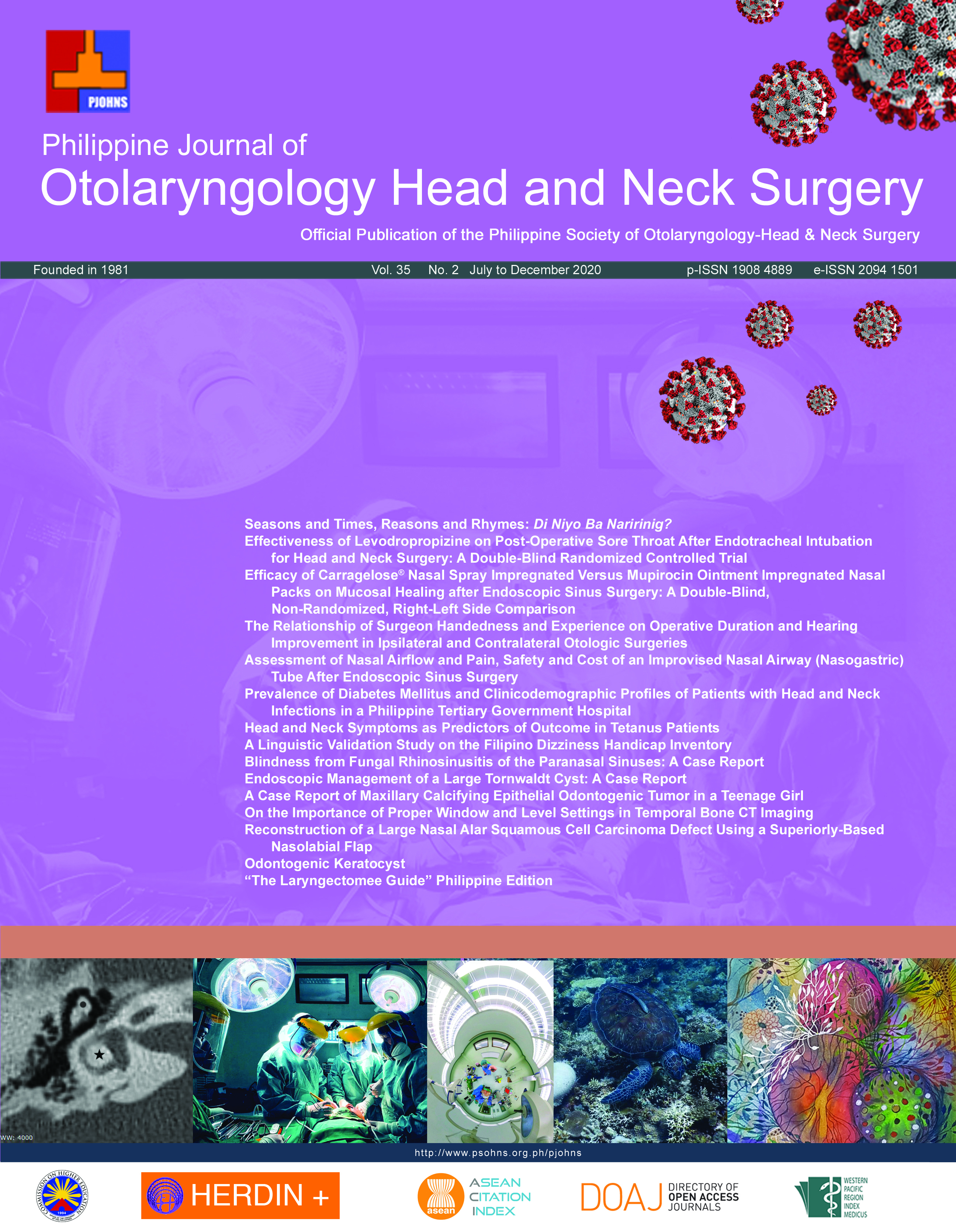Head and Neck Symptoms as Predictors of Outcome in Tetanus Patients
DOI:
https://doi.org/10.32412/pjohns.v35i2.1519Keywords:
tetanus, head and neck symptoms, outcome, predictors of outcome, trismus, neck pain/ rigidity, tracheotomyAbstract
ABSTRACT
Objective: This study aims to investigate which, if any head and neck symptoms (trismus, dysphagia, alterations in speech or facial movements, and dyspnea) might be good predictors of outcomes (mortality, tracheostomy, discharged, decannulated) and prognosis of tetanus patients.
Methods:
Design: Retrospective Cohort Study
Setting: Tertiary National University Hospital
Patients: Seventy-three (73) pediatric and adult patients diagnosed with tetanus and admitted at the emergency room of the Philippine General Hospital between January 1, 2013 and December 31, 2017. Demographic characteristics, incubation periods, periods of onset, routes of entry, head and neck symptoms, stage, and outcomes were retrieved from medical records and analyzed.
Results: Of the 73 patients included, 53 (73%) were adults, while the remaining 20 (27%) were pediatric. The three most common head and neck symptoms were trismus (48; 66%), neck pain/ rigidity (35; 48%), and dysphagia to solids (31; 42%). Results of multivariate logistic regression analysis showed that only trismus (OR = 3.742, p = .015) and neck pain/ rigidity (OR = 4.135, p = .015) were significant predictors of decannulation. No dependent variable/symptoms had a significant effect in predicting discharge and mortality.
Conclusion: Clinically diagnosed tetanus can be easily recognized and immediately treated. Most of the early complaints are head and neck symptoms that can help in early diagnosis and treatment resulting in better prognosis. In particular, trismus and neck pain/rigidity may predict the outcome of decannulation after early tracheotomy, but not of discharge and mortality.
Downloads
Published
How to Cite
Issue
Section
License
Copyright transfer (all authors; where the work is not protected by a copyright act e.g. US federal employment at the time of manuscript preparation, and there is no copyright of which ownership can be transferred, a separate statement is hereby submitted by each concerned author). In consideration of the action taken by the Philippine Journal of Otolaryngology Head and Neck Surgery in reviewing and editing this manuscript, I hereby assign, transfer and convey all rights, title and interest in the work, including copyright ownership, to the Philippine Society of Otolaryngology Head and Neck Surgery, Inc. (PSOHNS) in the event that this work is published by the PSOHNS. In making this assignment of ownership, I understand that all accepted manuscripts become the permanent property of the PSOHNS and may not be published elsewhere without written permission from the PSOHNS unless shared under the terms of a Creative Commons Attribution-NonCommercial-NoDerivatives 4.0 International (CC BY-NC-ND 4.0) license.



